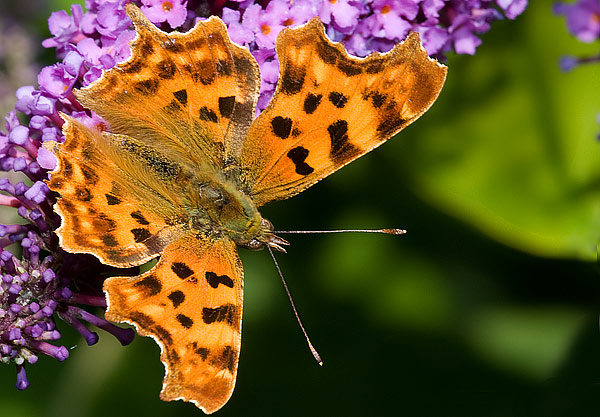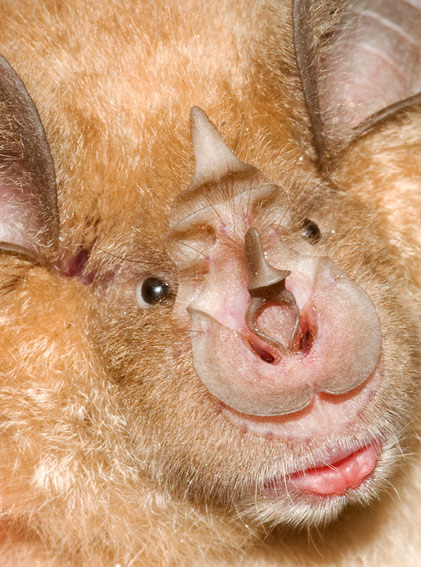We spent the weekend on 25-26th at my brother-in-law's house in Glastonbury. On the evening of 25th I saw a barn owl at Shapwick Heath, a little owl near Meare, and I heard the little bittern singing on the north side of the old railway track near Loxton's Marsh.We walked from Sharpham to Meare Heath on 26th, and saw little apart from a female marsh harrier and a kingfisher at Meare Heath. A mink ran over the track at Ham Wall.
Some more late-July lepidopterans from the garden can be seen by clicking on the comma below.
Food chain of introduced species. Oscar the eagle owl died in early May by 'flying into the Engineering building'. Here's some of what he was eating - skulls of grey squirrel and brown rat, long bone of feral pigeon. Seems he was doing a good job by feeding on other introduced species. I've still to work out whether the story of a cat found on the roof of the Engineering building showing signs of talon marks on it is an urban myth.
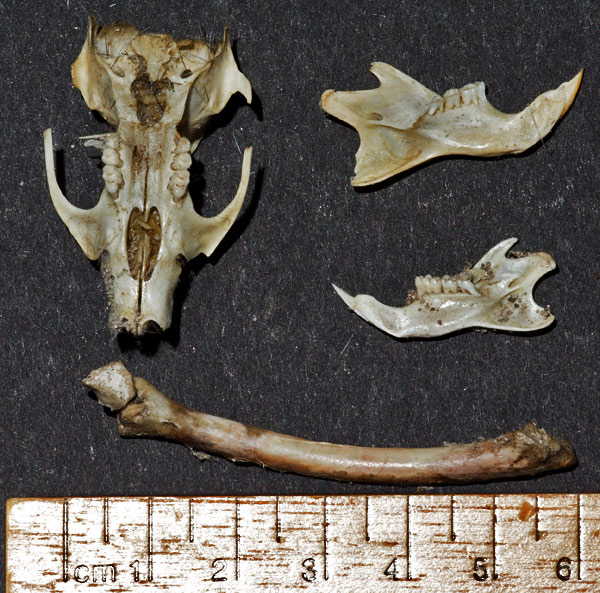
Survival strategies of moths. Moths can avoid being eaten by birds by being camouflaged, like this lobster moth on a lichen-covered tree trunk, photographed at Orielton in June
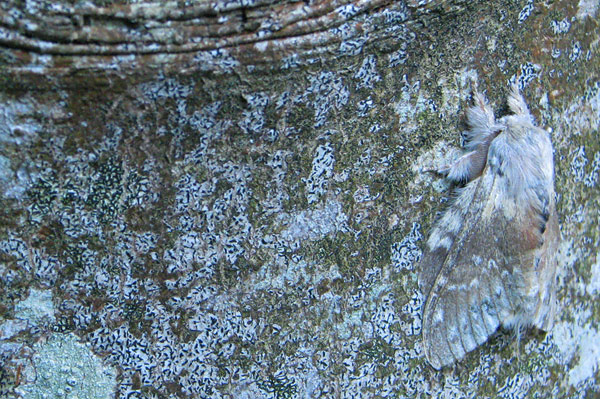
Some mimic bird droppings, like this Chinese character, captured in my moth trap on 21st.
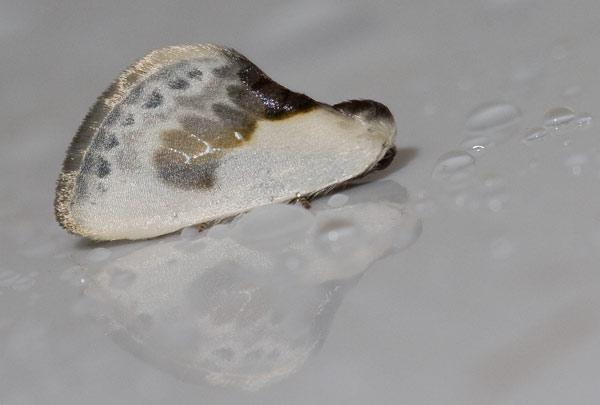
Others emit ultrasonic clicks to deter echolocating bats. I was contacted by Science to comment on a paper they published last week about an arctiid moth in America that is palatable, but clicks at a high rate seemingly to jam bat echolocation (the bit in the article about click loudness is a misrepresentation of what I said!). Most arctiids are brightly coloured, unpalatable and click at lower rates probably for aposematism - warning the predator about their distastefulness. I was surprised to find that this common footman also produced ultrasonic clicks when handled, with most energy at 36-40 kHz (frequencies at which many bats echolocate). Two that I captured subsequently didn't click. I didn't have the nerve to taste a moth, but my guess is that these clicks are also aposematic signals. Below the moth is an oscillogram and spectrogram of some clicks. You can listen to 10x expanded clicks by clicking on the icon above the spectrogram.
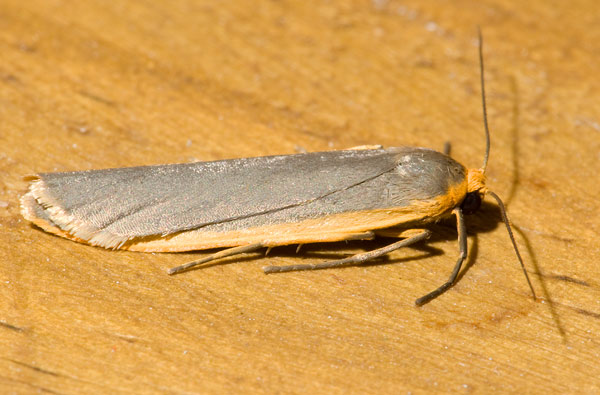
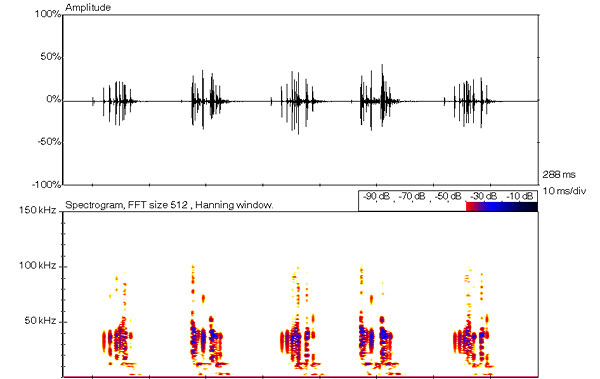
On 19th we did the annual big catch of greater horseshoe bats at Woodchester Mansion. I had handled most of the babies over the last 2 weekends to take tissue samples for DNA analyses. Roger Ransome at Woodchester has been studying the bats there for 54 years - probably the longest running mammal study in the world. We have been genotyping bats for the past 17 years, and know a lot about patterns of relatedness and parentage in the colony. Click on the bat's face below for some more images.
In late May there was a massive influx of painted lady butterflies into the UK. These migrants were tatty after their long journey north. Now their offspring are emerging. On 18th I visited a thistle meadow (thistles are the larval foodplant) near the old railway sidings in Flax Bourton, and have never seen such a concentration of butterflies. Hundreds, possibly thousands of freshly emerged painted ladies were on the wing.
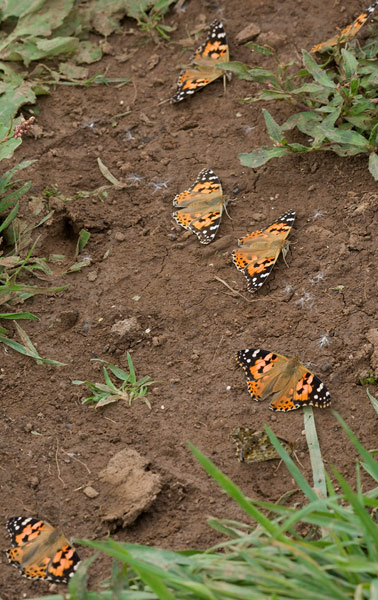
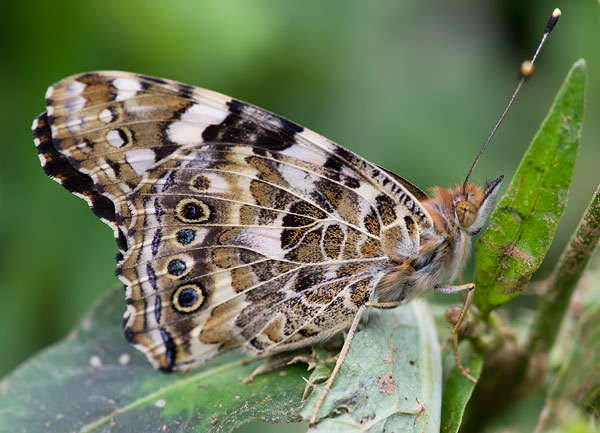
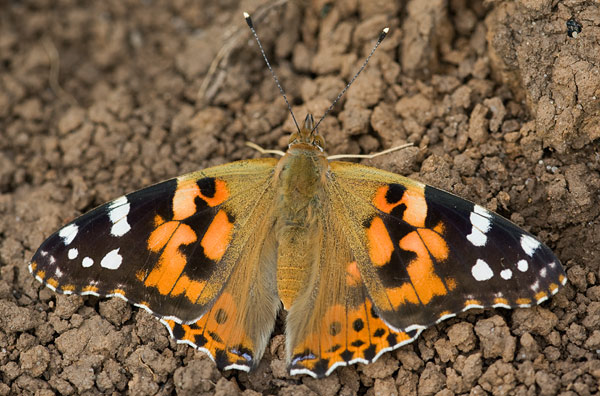
On 17th I took my daughter Kiara to the Clifton Suspension Bridge to take some photos at night. These are two of her best ones.
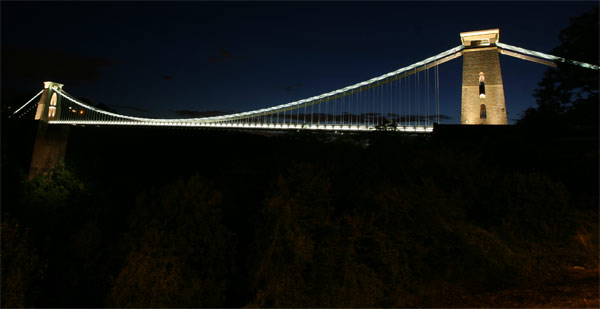

2nd generation early thorn moth (female) in the garden light trap - morning of 15th.
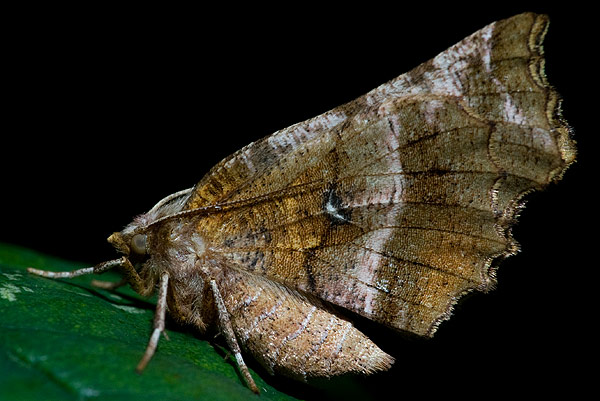
I visited Barrow tanks on the evening of 15th. Another small grebe in summer plumage there - this time a black-necked grebe.
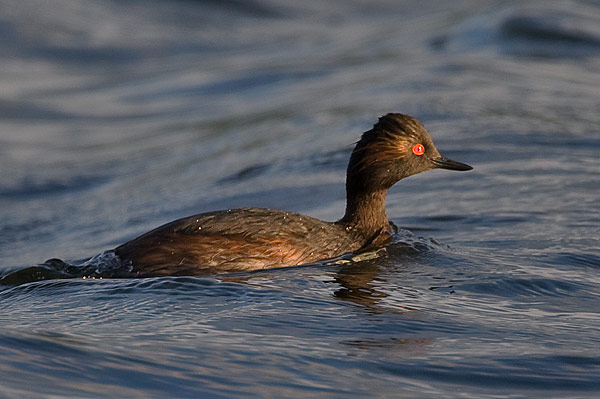
I also photographed a little egret and a hovering male kestrel there. Two common sandpipers also at tank 1.
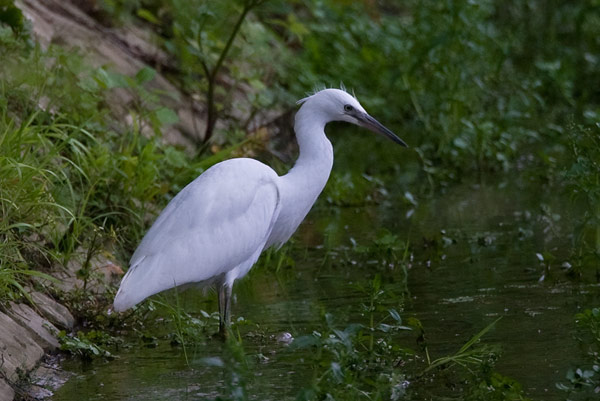
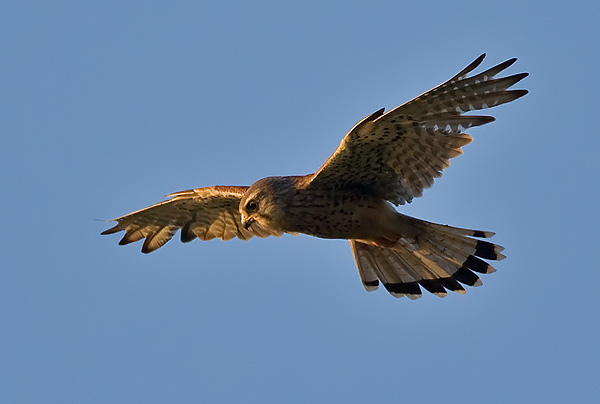
On the morning of 12th I visited the Exe Estuary to do something I had meant to do for the past 3 years - catch up with the ROSEATE TERNS that migrate through there. With 7 seen the previous day, my expectations were high. At high tide, there were at least 2 birds present at the Dawlish Warren hide. The birds weren't as showy as yesterday, but the first sighting was of a first summer bird, with dark legs and a carpal bar. Birds of this age are rarely seen in Europe. I was struck by the terns' long, curved bills. Photos are with a 2x converter, and heavily cropped.
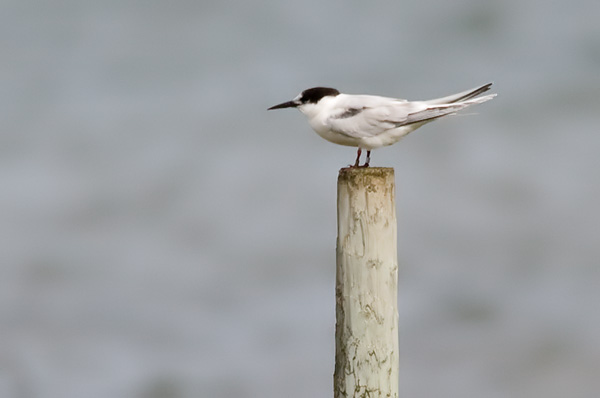
At least one adult bird was also present, with red legs.
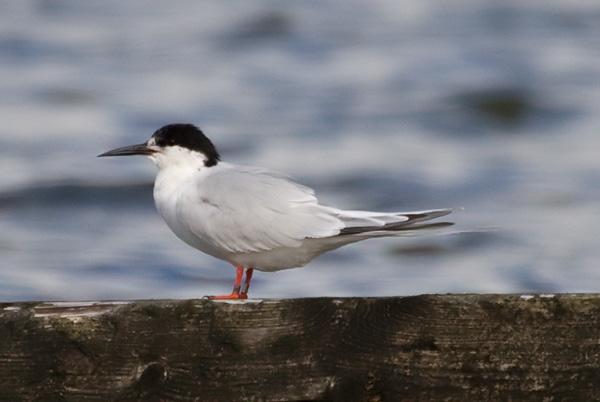
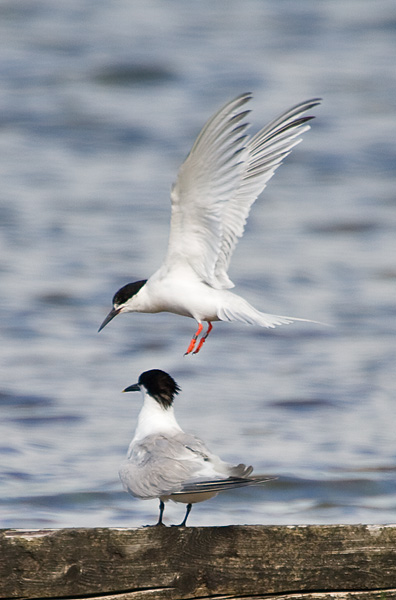
Also in the area were about 7 common terns, (including one with an all-red bill), and many sandwich terns. Sandwich tern photos are adult and juvenile (top), adult with sand eel (middle), and juvenile (bottom).
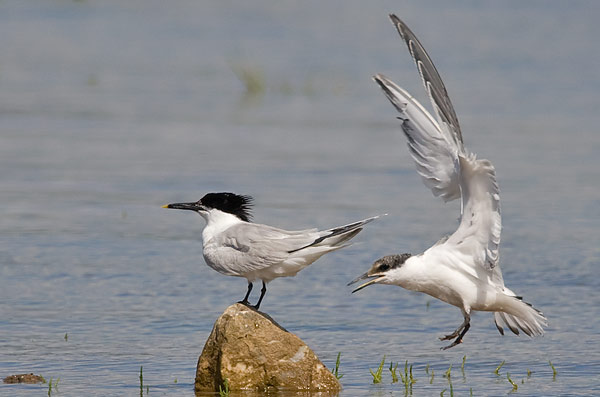

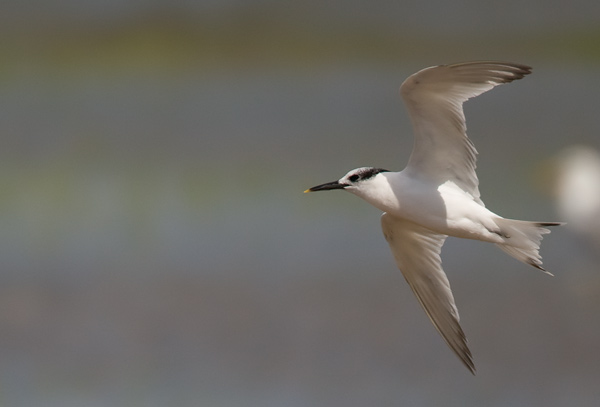
This partially leucistic bird roosted with the other oystercatchers.
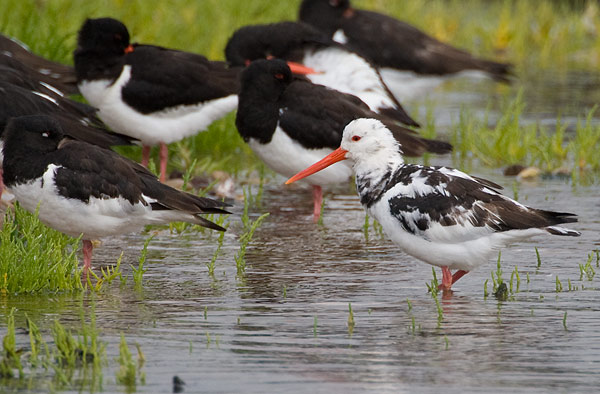
At Cockwood, the summer plumage Slavonian grebe showed well.
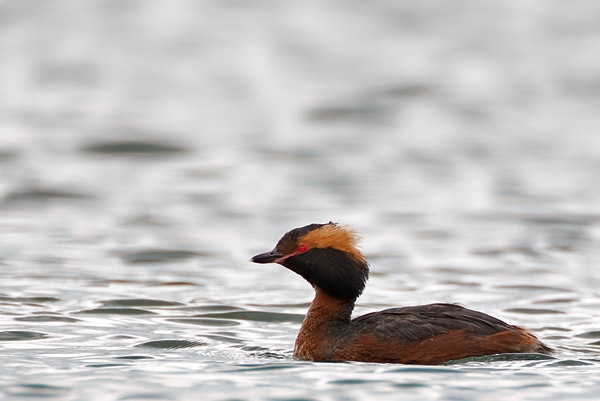
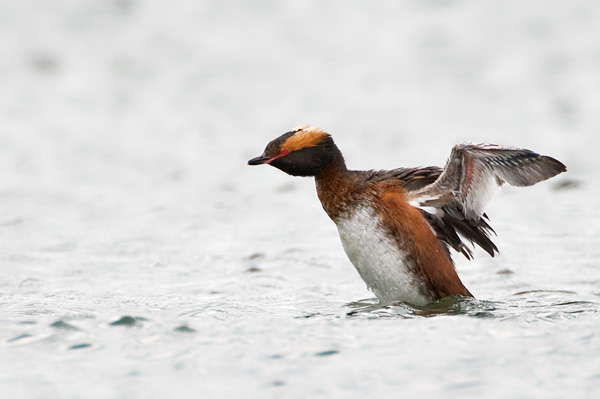
Another out of season bird was an osprey at Powderham castle.
On the night on 5th we visited PhD student Emma Stone doing her latest experiments on the effects of artificial lighting on bat activity at Lower Langford. Emma places artificial street lights along the commuting routes of bats, manipulates features such as light intensity, and measures the activity of commuting bats by using automated bat detectors.
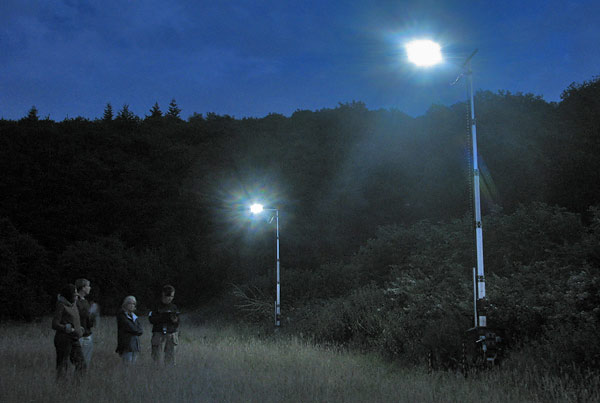
We walked the dog on Felton Common on 4th, while air traffic going into and leaving Lulsgate flew low overhead.

Butterflies included many ringlets, marbled whites, and a pale comma.
I was in Aberdeen on 3rd doing a PhD viva: a common or Arctic tern flew over the University botanic garden.
